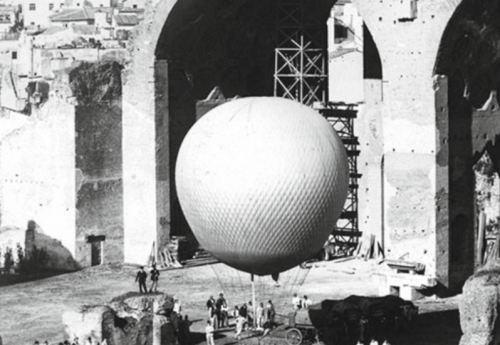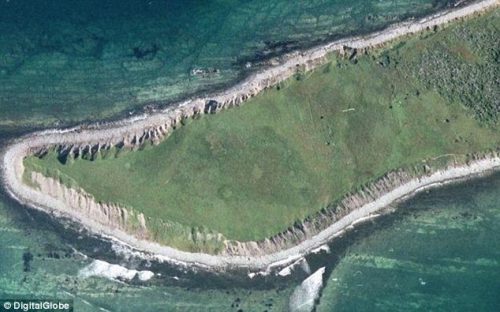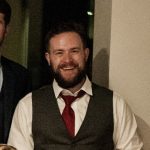Book Review- Sarah Parcak’s ‘Archaeology from Space’

What a great time to be a geospatial specialist. The impact of location technology continues to grow. I am excited the power of thinking “geospatially” continues to enhance every aspect of our lives and work. The application of technologies in new ways continues to move us forward.
Archaeology in particularly has been at the forefront experimenting with technologies. On a regular basis news outlets trumpet the discovery of ancient cities or other undiscovered archaeological finds using remote sensing. However the use of remote sensing tools is not a new technique in the field of archaeology.
An early archaeological example of the use of remote sensing occurred in 1898. Itlaian architect Giacomo Boni was working on new excavations in the Roman Forum (1899-1911) and on the Palatine hill. To get aerial photos, Boni enlisted the Italian military’s Brigata Specialisti military balloon. Moving a century ahead, archaeologists now use drones and and satellites.

This book review will explore how geomatics techniques and tools have been used to further our understanding of the past. Along the way I will share with you my liking for this book from the person who inspired me to combine my love of history and archaeology with geomatics.
Where It All Started…
Archaeologist Sarah Parcak’s book entitled, ‘Archaeology from Space- How the Future Shapes Our Past’, is a must read for anyone with an interest in archaeology and technology. The book describes Sarah’s career as an archaeologist and the application of remote sensing to her work. The book starts with a discussion of what inspired her to become an archaeologist and concludes with her hopes and dreams for the science of archaeology.
Sarah’s inspiration, and one could say obsession with archaeology, came from two sources: first her grandfather, then Indiana Jones.
“Indiana Jones helped inspire me to go into archaeology,” I told him (to Harrison Ford), “and inspired so many in my field. From all of us, thank you.” – “You do realize that I was just a character, right? You know more lines from that movie than I do.” – “Of course it was a movie, but it was your spirit that made Indy come to life. That was an inspiration from the start. And that’s why I’m thanking you, from the bottom of my heart.” – Maybe he’s just a very good actor, but I genuinely do not think he understood the impact he’d had on recent generations of our field until that moment.
Many professions have a hero that inspires others to make it a career, or at least develop a love it as an area of interest. Indiana Jones was this to Sarah, and Sarah was this to me.
What is Space Archaeology and How is it Used?
Sarah describes her early career journey and attempts at blending archaeology with geospatial technology across multiple chapters. Sarah describes a wide variety of peoples and backgrounds, which is made all the better through her welcoming writing style, personality, and bad jokes.
Once past the early chapters, Sarah talks about her archaeological work around the world. For Canadian readers the project closest to home for us is her search for a Viking settlement in Newfoundland. For this project, she explored the Point Rosee area of the western tip of Newfoundland in search of other Viking settlements to match that at L’Anse aux Meadows.

Using a combination of on the ground archaeological methods and remote sensing imagery (WorldView-2), She and her team observed and analyzed Point Rosee for Viking remains. Although they found some possible evidence, nothing was proven as definitive sign of a long-lost Viking settlement. Sarah ends this chapter by discussing how the use of LiDAR in the future could provide more answers at Point Rosee.
Looting of Archaeological Sites
In the next chapters of the book Sarah writes from a personal and emotional point of view. It is in these chapters where Sarah delves more into themes of being able to reconstruct the life of an ancient Egyptian based on their grave goods. In addition how climate change affected the ancient remains without realizing what was happening.
The dark side of archaeology comes to full light, and Sarah does not shy away from telling the truth of how damaging the looting of ancient sites can be. The impact of grave robbers destroys our our understanding of the past and the preservation of ancient cultures. She does a rare thing and discusses looting from the point of view of the looters and the reasons some of them do it.
Currency devaluations, unemployment, a drop in tourist numbers, and price inflation all provoke looting. Security is far better now at large archaeological sites, but at remote sites, the looting may get worse before it improves. Innovative solutions are needed to combat this issue, one of the great “hidden” problems of the 21st century. Hidden, but so dangerous.
Sarah goes on to describe how terrorism, the drug trade, and human trafficking all play a role in looting and what leads, or forces, people into it.
The jewel of this discussion is where she is describes a tomb that her and her team excavated in North-Central Egypt. Step by step Sarah talks about how different parts of it were looted at different periods in time.
Using remote sensing she is able to reconstruct bits and pieces of a person’s life straight out of Ancient Egypt from what had survived in their tomb to which she also estimates just how many tombs and burials could still be out there, buried under the sands of present-day Egypt. Her estimates put the percentage at only 1% discovered, meaning that there are so many more cultural, artistic, and personal stories out there for us to dig up.

Archaeology Tomorrow from Today
Sarah closes her book is by telling a short story about a future archaeologist in the 22nd century. This archaeologist works for a well financed firm able to fully excavate a site using an artificial on-site stand-in (a more physical version of a hologram) and a suitcase full of robots and drones. The archaeologist is able to excavate this site using their tools and technology in an hour flat, compared to days if not weeks in the present day.
In the future we can all hope well financed organizations with access to the latest technology are moving forward with archaeological research. Perhaps we are closer than we think with technologies such as LiDAR, machine learning, and hyperspectral remote sensing already available to archaeologists, despite some high costs.
Conclusion
Towards the conclusion of her book, Sarah restates the importance of exploring cultural heritage through the use of satellites, geospatial technologies, and a new and growing global movement to protect our shared pasts in the present for the future. This speaks true for myself in particular as someone who is within this field and shares this purpose. It should also ring hard for those readers who have an interest for archaeology, alongside that sense of wanting to do more for the field in any shape or form no matter where on Earth they are- or above it. Above all, Sarah Parcak succeeds and excels in telling her story of archaeology from her experiences and point of view, and how geospatial and geomatics technologies are expanding the recording and analytical tools of archaeologists in the field. Satellite remote sensing, data science, and 3D modelling are just such tools that allow archaeologists to see and study sites and ancient peoples in ways that were not available before, and so who knows what will come next.
‘Archaeology from Space’ has impacted me on a professional and personal level. Sarah Parcak inspired me to become a geospatial historian. Her words and themes cemented how I feel in regards to what I am striving towards. I look forward to seeing the gradual impact books like this have on people, and how people like Sarah Parcak use new and innovative technologies.






